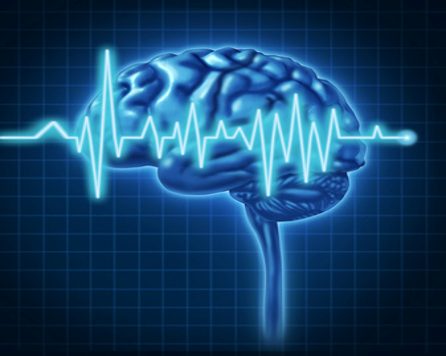Understanding Biofeedback

“What is biofeedback? I’ve been diagnosed with _____?, will it help?”
I’ve heard this, or a version of this, many times. “I’ve read a few things about it on the web but I didn’t get a handle on it.” declares a client on the phone.
It is difficult to answer without showing what I get up to in the office. I try though:
“You’ve done it many times,” I answer. “If you have ever had a temperature, you take a thermometer and put it under your tongue (or somewhere else!). You look at it and depending on the reading, you may reach for a cold damp cloth, take a paracetamol or try to reduce the fever in some other way.”
Essentially, if you measure something, see it and then do something to change it, you’re doing biofeedback.
Here’s another, more extreme, example. Let’s imagine you’ve lost a limb (ouch, to say the least). You have to learn how to walk again but this time with an artificial leg. As the physiotherapist encourages you and using parallel bars you put one foot in front of another. She grabs a mirror and draws lines on it. “Keep your hips level, keep them on this line, keep your shoulders level too.” Because she is using a mirror you can see what you’re doing, so you learn faster. As a result, there are several companies who supply physiotherapy mirrors (they don’t smash if someone accidently hits them), some with lines already drawn on them.
Internally, we are constantly doing things like changing our blood pressure, increasing our heart rate, modifying our respiration, varying the way we sweat, adjusting our temperatures, tightening up muscles etc. Because we do it automatically, most of the time we’re not even aware of it. The good news is that we have instruments that can easily measure this stuff. Feeling most of this is pretty much impossible. It might help if you are very fit, like a professional gymnast, or if you meditate a lot but even still, it’s difficult to feel small changes (try feeling your blood pressure sometime). With biofeedback you can immediately see what you’re doing on a screen in front of you. A typical conversation might go like this:
“Now try relaxing your shoulders.”
“They are relaxed!”
“Actually, they’re not, you just think they are. Look at the screen. When you relax them the line goes down. Now, relax them again but this time keep an eye on the screen so you can tell if you’re really doing it.”
The way it all gets applied depends a lot on the background of the therapist. A physiotherapist, tries to speed up the rehab process after a person has had a stroke or spinal cord injury etc. Nurses or urologists use it because the way they use it helps women after giving birth. The woman learns to activate the right muscles so she can learn to do her continence exercises correctly. I use it (as a psychologist) to try and help people manage stress, anxiety, and chronic pain I also use it to help people perform a bit better. If we use chronic pain and stress as an example, we can see how it’s applied.
Most people managing chronic pain are stressed and or depressed and they are certainly not going to be functioning at peak performance. With the various instruments (we’ve put them all on one computer) I can measure muscle tension, heart rate, breathing rate, skin temperature, sweat response and brain wave activity. They’re all standard instruments that have been around since Adam was a lad, but unlike when you are being tested in a hospital, you’re fed back the levels immediately (you can see them). You’ll learn how to become self-aware and non-judgemental (that’s why we use mindfulness so often). Once you have become more accurately aware of what you’re doing automatically, you can learn to change it. It’s all based on operant conditioning. All this will help you to learn how to quickly and efficiently let go after a stressor.
If, for example, the big stressor in your life is pain you’ll probably automatically tighten the muscles around the area that hurts, avoid using that group of muscles, elevate your heart rate, change your temperature, break out in a cold sweat and the list goes on. Or if that stressor is a presentation that you have to give tomorrow, a fight with your nearest and dearest or missing a mortgage payment… you’ll probably do the same thing. Life becomes a litany of chronic stressors with you constantly activating systems in your body that evolved to help you deal with life threatening situations. Systems that are supposed to be switched on for short periods and then shut off. The problem is you’re constantly being exposed to stressors and leaving the stress responses on.
A lot of times we rely on a friend or family member to recommend somebody for a job. “Try John for your sink, he did mine and he was great.” The problem is that in the health world relying on recommendations is more difficult. Most people just don’t use health practitioners as often as they use plumbers, mechanics or other trades people. So we need to be cautious. Most of the time all we can do is look at the minimum. We don’t have a licencing system for psychologists in Ireland so in the qualifications to look for are “BCB” or “BCN”. If someone is in the process of fulfilling the requirements…that’s also great.
The qualification also means that they have to continue to study and do classes (CPD) in order to keep the qualification current. In addition, you want the person to be qualified in their own area and be insured. If you want to read more about the area of applied psychophysiology you can go to the professional organisations website: www.aapb.org or to look at the requirements for qualification: www.bcia.org. If you are looking for more information, particularly in Ireland you can try www.biofeedback.ie
Daren has been working as a biofeedback therapist for over 20 years and was born in Bray, Co Wicklow. They received their doctorate from Trinity College Dublin having previously completed a degree in psychology in California State University (1993) and became a fellow of the Biofeedback Certificate International Alliance (now a senior fellow).
Latest Issue
Upcoming Events
-
17/04/2020 to 26/04/2020
-
18/04/2020
-
23/04/2020
-
15/05/2020 to 23/05/2020
-
16/05/2020 to 17/05/2020
Recent Articles
Article Archive
- November 2011 (2)
- January 2012 (3)
- February 2012 (2)
- March 2012 (2)
- April 2012 (4)
- May 2012 (4)
- June 2012 (1)
- July 2012 (3)
- August 2012 (2)
- October 2012 (2)

